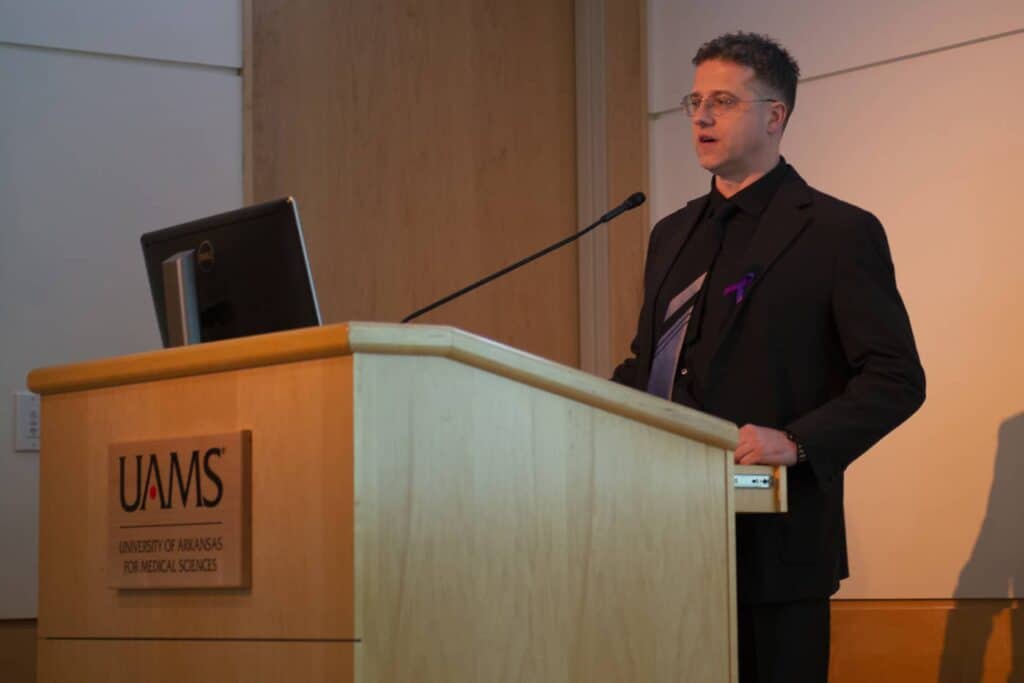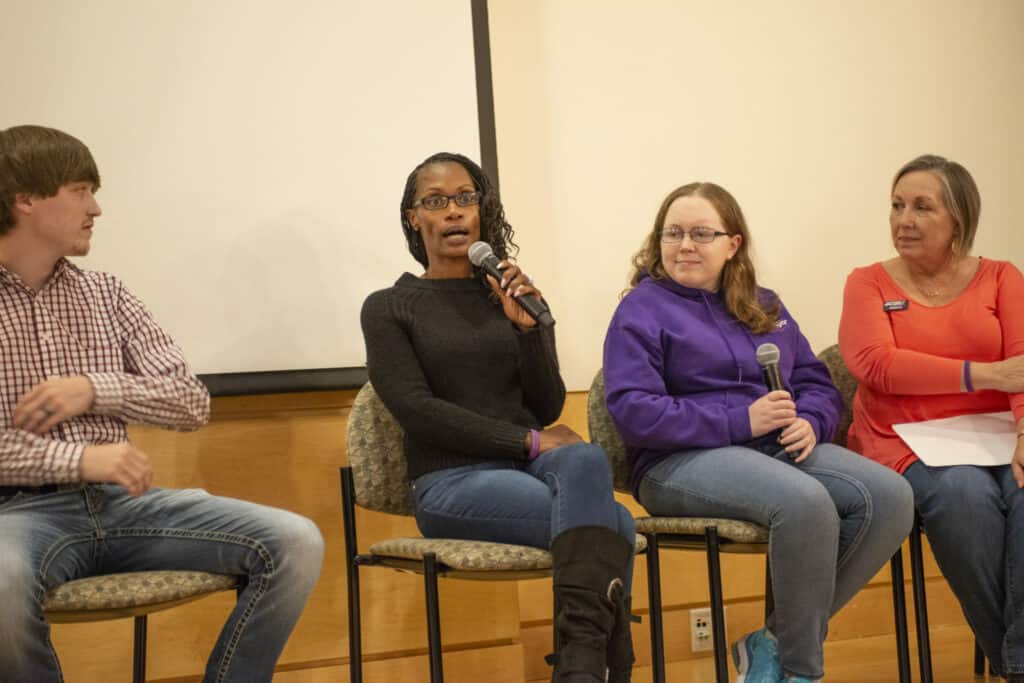Nov. 26, 2019 | About 45 health care professionals and patients met Nov. 16 to discuss the latest advances in the diagnosis and treatment of epilepsy and seizure disorders at Arkansas’ first Epilepsy Symposium at UAMS.
Epilepsy is a common and serious neurological condition that affects over 50 million people worldwide. Epilepsy specialist and

Viktoras Palys, M.D. speaks to the audience during the epilepsy symposium.
UAMS neurosurgeon Viktoras Palys, M.D. says it is arguably the most neglected disease for which the effective treatment exists.
“It’s neglected from the provider standpoint because many providers are still not aware that there are many effective treatments available, including numerous medications, as well as surgical options,” Palys said. “Patients sometimes give up trying to get referrals or they’re afraid of brain surgery. Few patients get appropriate treatment, considering the options available.”

Sonya Gibbs, part of the patient panel, talked about her experience living with epilepsy.
The symposium was open to patients, caregivers, family members and health care professionals interested in epilepsy treatment. Health care providers were on hand to answer questions. There was also a panel of patients who gave testimonies about their experiences, including Sonya Gibbs, who was diagnosed 12 years ago at age 32.
Gibbs had a grand mal seizure in the middle of the night that frightened her husband from his sleep. A grand mal seizure is the most visible kind of seizure — a person loses consciousness and their body stiffens and jerks violently.
“It just came out of the blue,” Gibbs said. “Even though I’m a nurse, I didn’t know a lot about epilepsy. This journey has been a learning process for my family and me. I was so happy to attend the symposium and be able to connect with others who have epilepsy.”
Attendees for the first symposium came from over the state as well as from Texas and Kansas. They listened and interacted in topics ranging from seizure medications to seizure first aid where presenters discussed safety measures when driving, bathing and being around fire. At the end of the symposium, all faculty gathered on the podium to answer the most frequently asked questions.

Tammy Drake, RN (standing) and Christian Pedroza Portillo demonstrate seizure first aid and safety measures.
Topics included:
Palys says attendees left the symposium informed and inspired.
“There are still a lot of myths about the disease,” Palys said. “The more patients and their families know about the condition, the closer we can move toward either a cure or at least an evidence-based management in a way that minimizes complications.”
